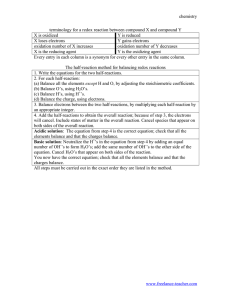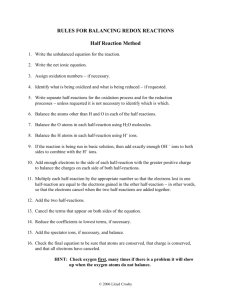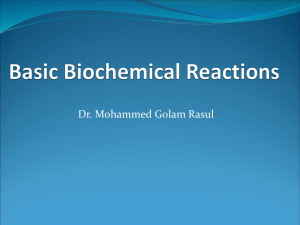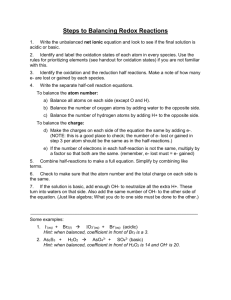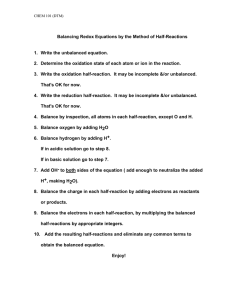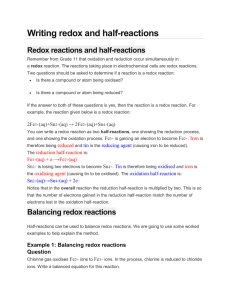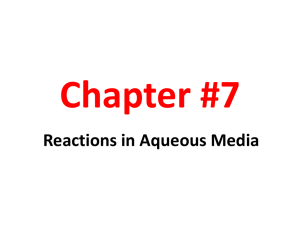CHE 161 REDOX BALANCING
advertisement
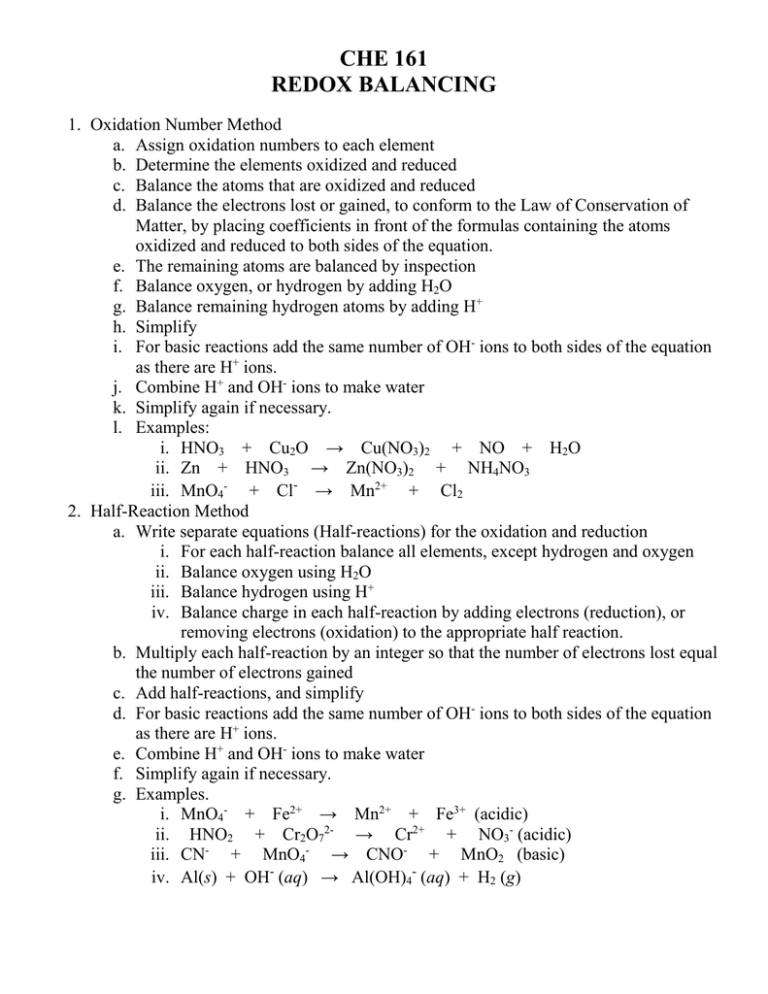
CHE 161 REDOX BALANCING 1. Oxidation Number Method a. Assign oxidation numbers to each element b. Determine the elements oxidized and reduced c. Balance the atoms that are oxidized and reduced d. Balance the electrons lost or gained, to conform to the Law of Conservation of Matter, by placing coefficients in front of the formulas containing the atoms oxidized and reduced to both sides of the equation. e. The remaining atoms are balanced by inspection f. Balance oxygen, or hydrogen by adding H2O g. Balance remaining hydrogen atoms by adding H+ h. Simplify i. For basic reactions add the same number of OH- ions to both sides of the equation as there are H+ ions. j. Combine H+ and OH- ions to make water k. Simplify again if necessary. l. Examples: i. HNO3 + Cu2O → Cu(NO3)2 + NO + H2O ii. Zn + HNO3 → Zn(NO3)2 + NH4NO3 iii. MnO4- + Cl- → Mn2+ + Cl2 2. Half-Reaction Method a. Write separate equations (Half-reactions) for the oxidation and reduction i. For each half-reaction balance all elements, except hydrogen and oxygen ii. Balance oxygen using H2O iii. Balance hydrogen using H+ iv. Balance charge in each half-reaction by adding electrons (reduction), or removing electrons (oxidation) to the appropriate half reaction. b. Multiply each half-reaction by an integer so that the number of electrons lost equal the number of electrons gained c. Add half-reactions, and simplify d. For basic reactions add the same number of OH- ions to both sides of the equation as there are H+ ions. e. Combine H+ and OH- ions to make water f. Simplify again if necessary. g. Examples. i. MnO4- + Fe2+ → Mn2+ + Fe3+ (acidic) ii. HNO2 + Cr2O72- → Cr2+ + NO3- (acidic) iii. CN- + MnO4- → CNO- + MnO2 (basic) iv. Al(s) + OH- (aq) → Al(OH)4- (aq) + H2 (g)
